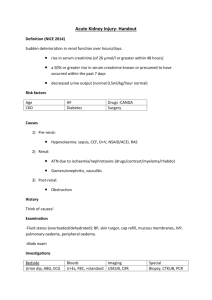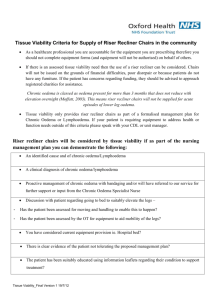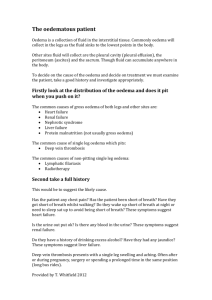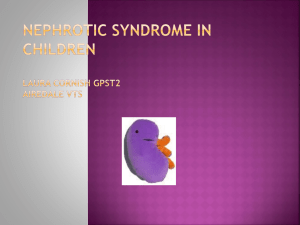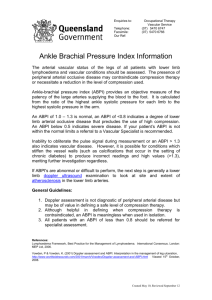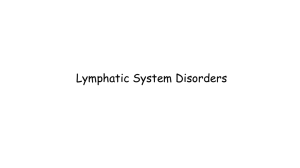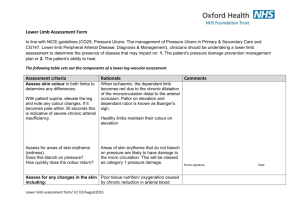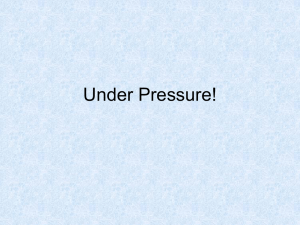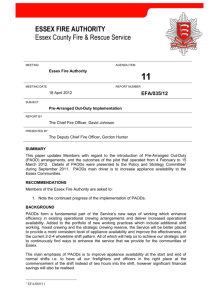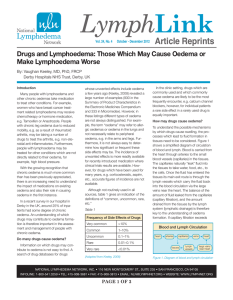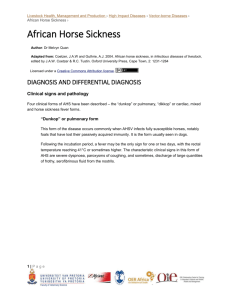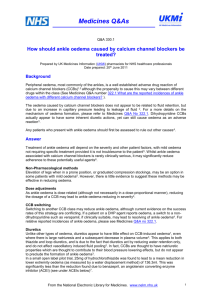Flowchart for the management of chronic oedema for people with
advertisement
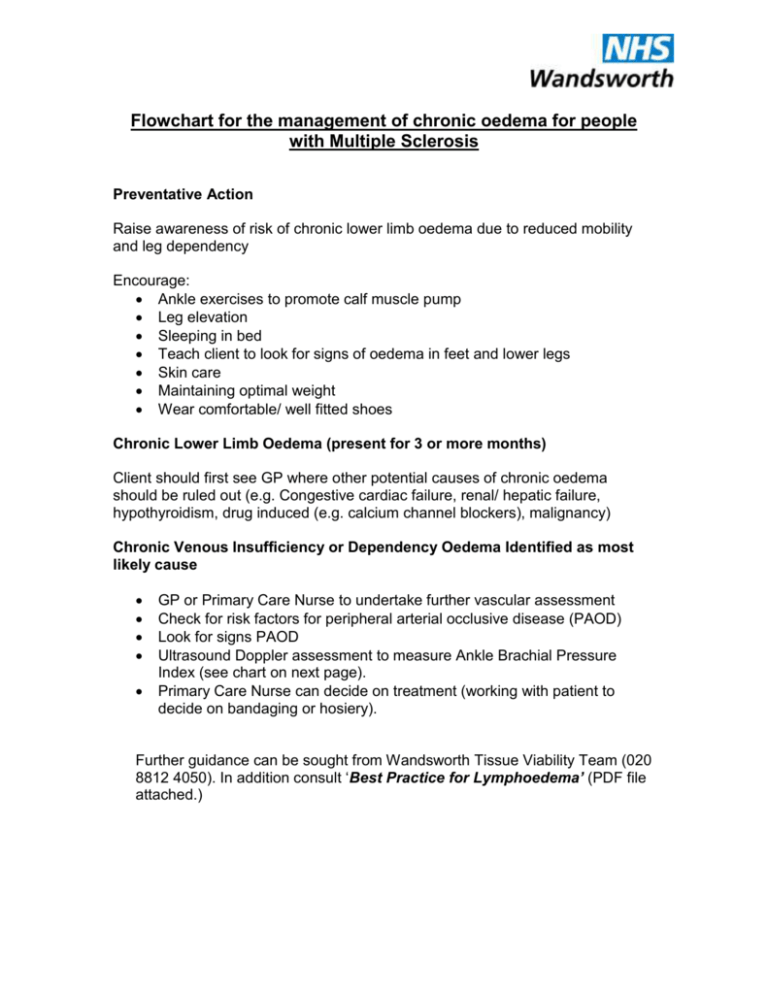
Flowchart for the management of chronic oedema for people with Multiple Sclerosis Preventative Action Raise awareness of risk of chronic lower limb oedema due to reduced mobility and leg dependency Encourage: Ankle exercises to promote calf muscle pump Leg elevation Sleeping in bed Teach client to look for signs of oedema in feet and lower legs Skin care Maintaining optimal weight Wear comfortable/ well fitted shoes Chronic Lower Limb Oedema (present for 3 or more months) Client should first see GP where other potential causes of chronic oedema should be ruled out (e.g. Congestive cardiac failure, renal/ hepatic failure, hypothyroidism, drug induced (e.g. calcium channel blockers), malignancy) Chronic Venous Insufficiency or Dependency Oedema Identified as most likely cause GP or Primary Care Nurse to undertake further vascular assessment Check for risk factors for peripheral arterial occlusive disease (PAOD) Look for signs PAOD Ultrasound Doppler assessment to measure Ankle Brachial Pressure Index (see chart on next page). Primary Care Nurse can decide on treatment (working with patient to decide on bandaging or hosiery). Further guidance can be sought from Wandsworth Tissue Viability Team (020 8812 4050). In addition consult ‘Best Practice for Lymphoedema’ (PDF file attached.) No PAOD (ABPI >0.9) Commence multi-layer (elastic or inelastic) moderate to strong compression bandaging (40mmHg) Stabilise oedema Once skin condition intact and limb shape improved fit with Moderate to strong (Class 2-3) Flat knit compression hosiery Mild PAOD (ABPI 0.5- 0.9) Severe PAOD (ABPI <0.5) Commence mild level 15-25mmHg) of multilayer compression therapy Refer to Vascular Specialist Consider vascular referral dependant upon symptoms. Conservative management with leg elevation and/ or support bandaging (padding and crepe) Once skin condition intact and limb shape improved fit with Mild (Class 1) Flat knit compression hosiery Prevention of cellulitis Good skin care (using ph neutral soap or soap substitute, regular application of moisturiser or emolient, checking skin folds and between toes and general skin inspection) to manage problems such as dry skin, varicose eczema, fungal infections and folliculitis. Limit contact with potential allergens and choose appropriate dressing to manage ulceration. Consider prophylactic antibiotic treatment if client experiences 2 or more episodes of cellulitis per year. (See PDF file ‘Best Practice for Lymphoedema’ page 28) R Smithdale Clinical Nurse Specialist in Tissue Viability September 2009
